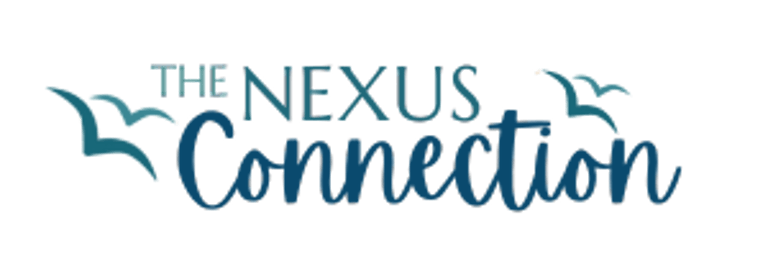
Independent Learning: How to Support Self-Directed Study at Home
Self-directed study skills are fundamental to success. This guide walks you through how to help students plan, structure and present independent projects with confidence.
🟢 🧭EXPLORE
‘You have brains in your head. You have feet in your shoes. You can steer yourself any direction you choose.’ Dr Seuss
Our Guide to Independent Research
Home education offers the freedom to explore subjects in a way that isn’t always possible in traditional schooling. Independent research encourages curiosity, critical thinking and deeper understanding. It also develops skills that are invaluable for higher education and the workplace, such as time management, self-motivation and effective communication.
So, here's our guide, inspired by Dr Seuss, in honour of his birthday on 2nd March.
‘The more that you read, the more things you will know. The more that you learn, the more places you'll go.’
The Benefits of Self-Directed Learning
Ownership of Learning – Students engage more deeply when they explore topics they genuinely care about.
Critical Thinking and Problem-Solving – Learning how to ask questions, find reliable sources, and evaluate information is key to academic success.
Flexibility & Creativity – Without rigid curriculums, students can approach research in ways that suit their learning styles.
Preparation for Further Study and Careers – University courses and many careers require independent research and the ability to learn autonomously.
How to Structure an Independent Research Project
‘You have brains in your head. You have feet in your shoes. You can steer yourself any direction you choose.’
For students who are used to structured, teacher-led learning, shifting to a more exploratory style can initially feel overwhelming. However, if you split your project into smaller 'chunks' and adapt as you go, the process becomes more manageable – and fun!
🤔1. Choose a Topic
‘Congratulations! Today is your day. You're off to Great Places! You're off and away!'
Start with broad interests (e.g., environmental issues, ancient history, media representation). Follow Interests: Let curiosity guide the process. Ideas for this half-term are at the bottom of this page.
Narrow it down to a specific question (e.g., ‘How does social media shape political activism among young people?’).
If unsure, use the ‘5W & 1H’ method: Who, What, Where, When, Why and How.
✏️2. Plan the Research
‘Oh, the things you can find if you don’t stay behind!’
Break the research into stages: background reading, gathering sources, taking notes, analysing information, and presenting findings.
Set a realistic timeline to avoid feeling overwhelmed.
💻3. Find Reliable Sources
‘Read. Travel. Read. Ask. Read. Learn. Read. Connect. Read.’
Books, academic articles, documentaries, and reputable websites are great starting points.
Encourage students to compare multiple sources and think critically about bias.
Useful resources: Google Scholar, the British Library, OpenLearn (The Open University).
Use Multimedia: Podcasts, documentaries, and interviews can make research more dynamic.
🖋️4. Organise and Take Notes
‘Reading can take you places you have never been before.’
Use a research journal, digital notes, or mind maps to track ideas.
Summarise key points rather than copying large sections.
🔍5. Analyse and Reflect
‘A book is just like life and anything can change.’
What patterns or trends emerge?
Are there different perspectives on the topic?
Join Discussions: Online forums, book clubs, or debate groups can add depth to learning.
Encourage learners to develop their own viewpoint rather than just repeating what they’ve read.
📈6. Present Findings
Research can be shared in different ways: an essay is one way, but sharing ideas via a poster, a mind map, creative writing, a blog post, a video, or a discussion with family can be just as valuable.
Encourage creativity—learners could create infographics, presentations, or even short documentaries.
Collating research creatively transforms learning from a passive activity into an active, engaging process. It allows students to play to their strengths, whether they prefer writing, visual thinking, or speaking. More importantly, it helps develop literacy skills in meaningful ways—from summarising and analysing information to structuring arguments and presenting ideas clearly.
Encouraging students to experiment with different formats can boost their confidence and help them discover the methods that work best for them. Independent research isn’t just about gathering facts—it’s about learning how to think, communicate, and create.
🌱Conclusion: Building a Lifelong Skill
Independent research is more than just an academic exercise—it’s a way of thinking that helps students become adaptable, informed and curious people. Whether they go on to further education or take a different path, learning how to explore ideas and find answers will benefit them for life. It may also benefit others. As Dr Seuss says:
‘Unless someone like you cares a whole awful lot, nothing is going to get better. It’s not.’
💡Ideas for Independent Research Projects: Spring 2, 2025
Media Studies: The Rise of AI in Journalism—Can We Trust AI-Generated News?
Film Studies: Women in Film. Is Laura Mulvey's 'Male Gaze' theory still relevant today?
Sociology: The impact of social media on teenage mental health.
History: The role of propaganda in shaping public opinion during major conflicts.
English Literature: Dystopian fiction—Is it still relevant today? or Literature and Conflict – War Poetry over Time.
Politics: The influence of youth activism on policy changes and the run-up to the next elections or Global Politics: International Relations and the developing situation in Ukraine.
